Table of contents
What is aromatherapy?
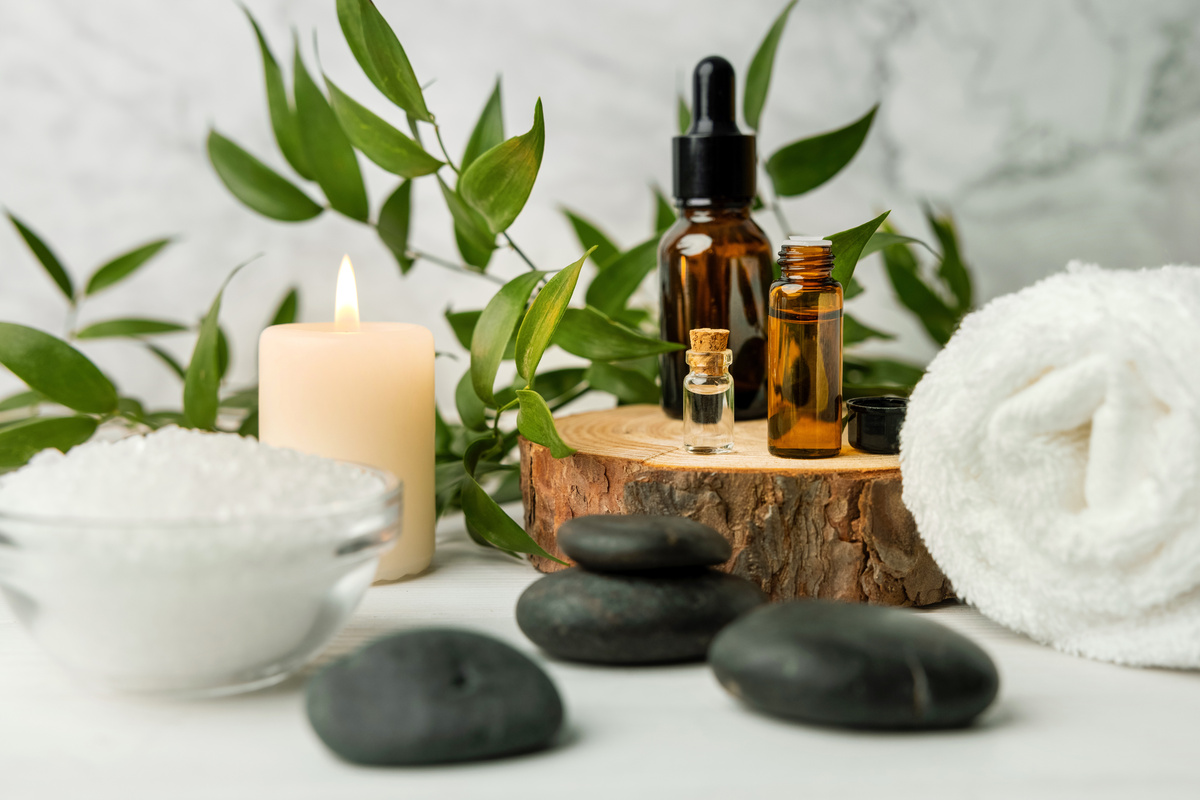
Aromatherapy is a holistic method that uses the therapeutic power of aromas to promote the physical, mental, emotional and spiritual well-being of its users. In its therapeutic essence are the essential oils, responsible for serving as agents promoters of healing.
The effects of Aromatherapy are based on the physical and emotional effect that aromas can provoke in the body. The sense of smell is closely linked to survival, memory and emotions and therefore, by recognizing specific aromas, it is possible to relive moments or remember personal, because the smell provokes responses in the body and brain.
This article is an introduction to aromatherapy. In it we present the history of aromatherapy and give the fundamentals so you can benefit from the effects of essential oils in your life. We also include a description of 20 essential oils with their therapeutic uses for you to embark on this aromatic journey.
Curiosities about aromatherapy
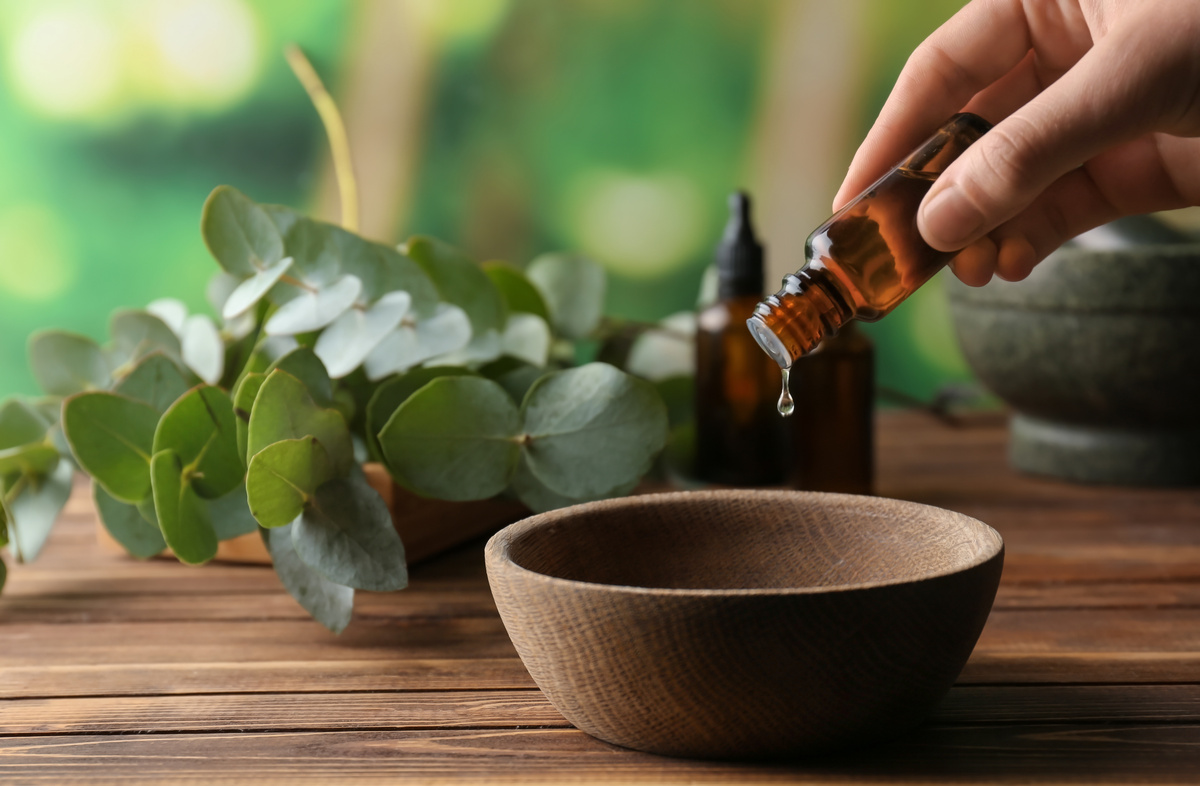
This initial part presents the curiosities about Aromatherapy. We start with its brief history, also defining what are essential oils and presenting the basic concepts about the functioning, benefits and contraindications of essential oils.
Aromatherapy in history
The history of aromatherapy begins more than 3500 B.C., since the dawn of humanity, plants, herbs and flowers have been used because of their aromatic properties. However, it was only in 1830, in the city of Grasse, France, that the study of essential oils began.
Some years later, in 1935, the term Aromatherapy was used for the first time by French chemist and perfumer René-Maurice Gattefosse, after claiming to have treated a burn resulting from an accident in his distillery with lavender essential oil.
Currently, Aromatherapy is practiced around the world, basically from two schools: the French and English. Despite the differences, both have a great point in common: the recognition of the therapeutic power of essential oils.
How aromatherapy works
Aromatherapy works in two main ways: inhalation and absorption. When you inhale essential oils, numerous molecules that are dispersed in the air come into contact with nerve cells responsible for our olfactory perception.
Upon contact, neural impulses are sent that travel through the limbic system, the part of the brain that is related to instincts and emotions. The passage of these nerve signals has an effect on mood because they alter brain chemistry.
When used topically, essential oils are absorbed by the epidermis, the most superficial layer of the skin, and reach the dermis, when they are finally transmitted through the bloodstream to travel throughout the body.
What is essential oil?
Essential oils are aromatic concentrates extracted from plants. They are produced through processes such as distillation and pressing of plant parts like leaves, wood, flowers, bark or even their resins.
From this process it is possible to capture the chemical compounds responsible for the characteristic aroma of the plant from which the oil was extracted. Generally, many kilos of the aromatic plant are used to extract its essential oils, which is why they are usually very expensive.
Each essential oil is composed of chemical molecules that are highly volatile and spread through the air easily. These molecules vary according to the plant and therefore each essential oil has a different therapeutic assignment, which is employed in Aromatherapy.
Benefits of aromatherapy
The benefits of Aromatherapy are numerous. Among the main ones are:
- Improved mental, physical and emotional health;
- Relief from symptoms caused by stress, anxiety and depression;
- Improved sleep quality;
- Reduction of pain, especially caused by psychosomatic issues;
- Improved quality of life and mood;
- Increased relaxation;
- Holistic complement to traditional allopathic treatments;
- Fights small agents of infection such as bacteria, fungi and viruses;
- Help with the side effects of cancer treatments;
- Offering natural and alternative treatment for problems that are not easily treated with other more traditional forms of treatment.
Despite these numerous benefits, it is important to remember that Aromatherapy should be followed with the help of a qualified professional.
How aromatherapy is used
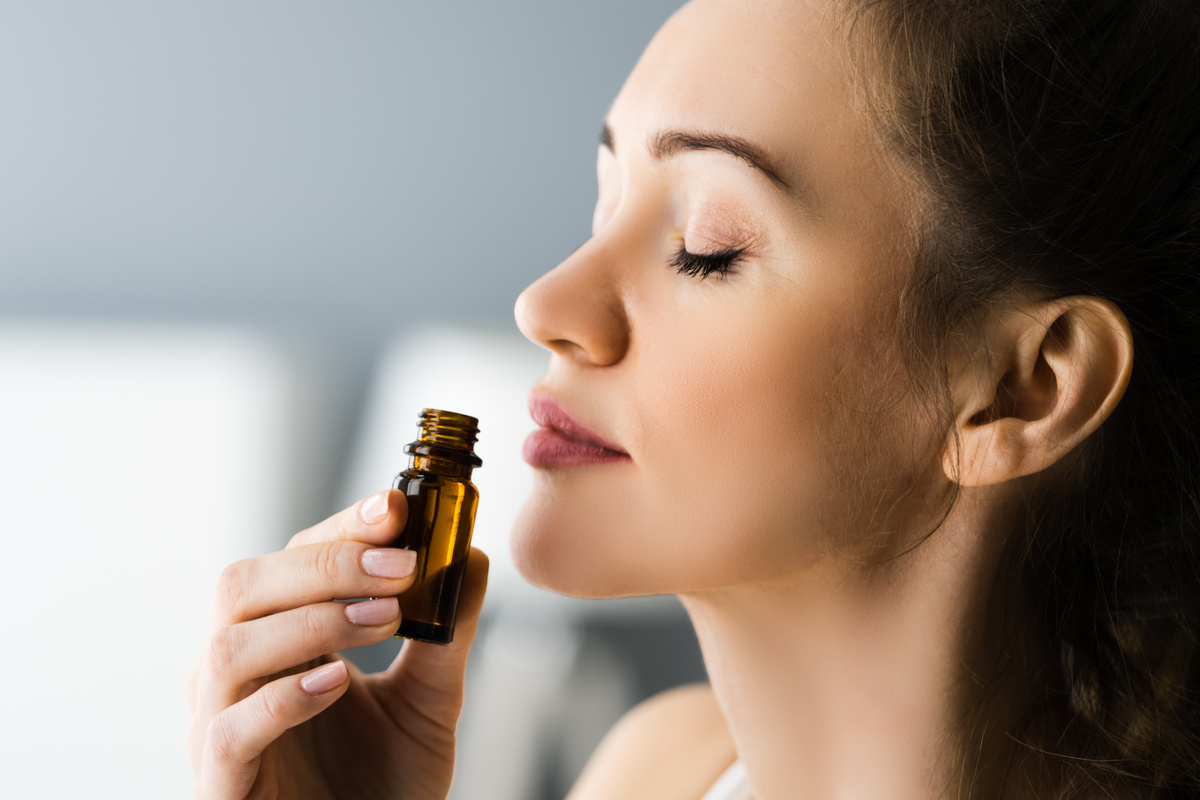
There are several ways to use aromatherapy, but its use basically happens in two ways: inhalation and topical applications. Read on to learn more about inhalation and topical use of essential oils.
Inhalation
One of the main uses of aromatherapy is through inhalation. Essential oils are generally inhaled through personal or room diffusers. The room diffuser may be of the ultrasonic type or a simple porous surface onto which the essential oils are dripped.
However, it is also possible to benefit from the inhalation of essential oils without needing diffusers, inhaling them directly from your bottle or dripping a few drops onto a clean cotton cloth, for example.
Topical applications
Another way to benefit from the use of essential oils is through topical applications. When performing these, it is important that you dilute your essential oils in a carrier oil. A carrier oil serves as a vehicle to carry the aromatic molecules into your body safely, causing them to be easily and effectively absorbed into the skin.
Since essential oils are easily evaporated, the carrier oil helps fix these molecules to your skin so they can reach the bloodstream and be spread throughout the body. Examples of carrier oils are jojoba, sweet almond, coconut, and grape seed.
Contraindications and adverse effects of aromatherapy
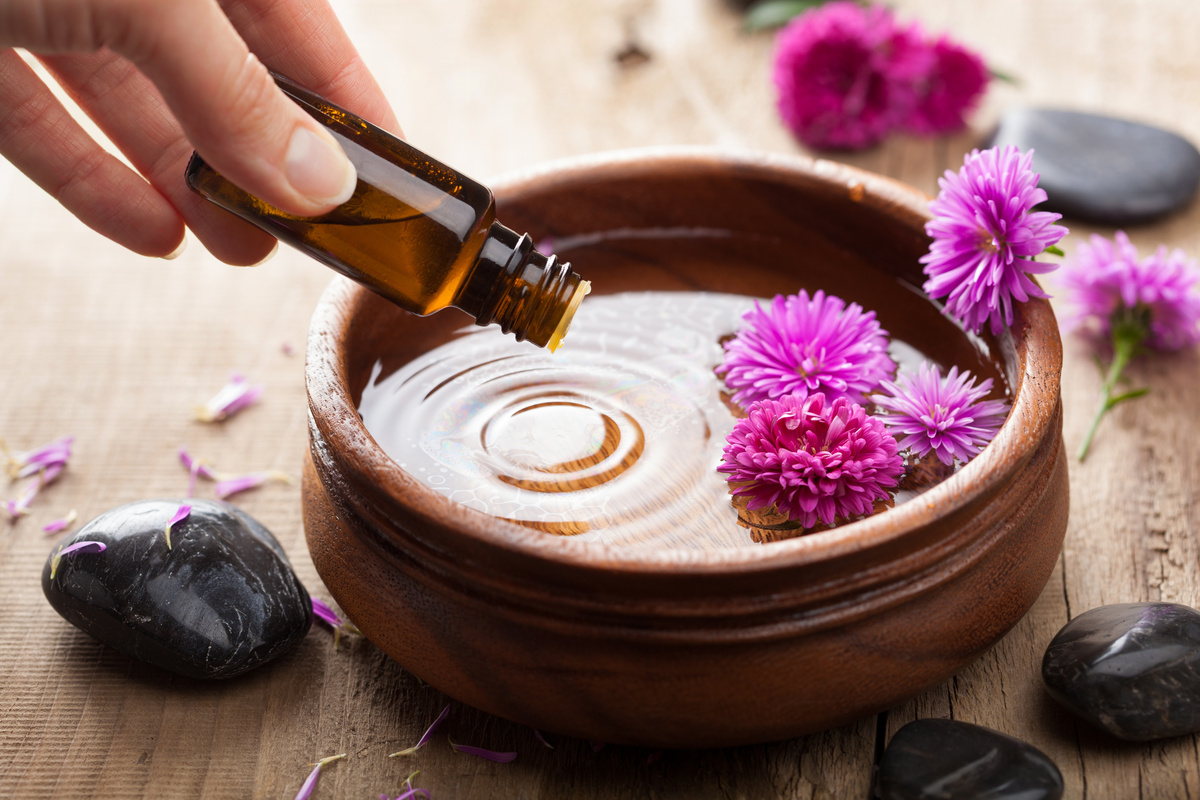
Although aromatherapy is considered a safe alternative therapy, it can cause adverse effects and has contraindications. These effects are usually due to poor administration of essential oils or due to pre-existing conditions such as allergies. Read on to find out why.
Side effects
Among the main side effects generated by poor administration of essential oils in Aromatherapy sessions are:
- Irritation, itching and redness in the area where the essential oil has been applied;
- Headaches;
- Allergic reactions such as anaphylactic shock;
- Nausea and vomiting.
In addition to these side effects, since essential oils release volatile organic compounds into the air, they can worsen asthma symptoms or even trigger an asthma attack. Always consult a doctor to find out if you can make use of essential oils as a complementary treatment to conventional medical treatment.
Contraindications
Most essential oils are safe to use, however, it is important to be careful when using them, especially if you are taking any medication or have any comorbidity. Pregnant women, nursing mothers, women who have recently given birth and small children should not use essential oils unless accompanied by an appropriate professional.
If you have an allergy to any component present in the essential oil or even the plant itself from which the essential oil is extracted, do not use it. Also, be extra careful when using essential oils if you suffer from:
- Asthma;
- Eczema
- Epilepsy;
- Hypertension;
- Psoriasis;
- Allergic rhinitis.
Never use essential oils internally or apply them directly to the skin: always use a carrier oil when applying them to the skin.
Allergy test
Even though aromatherapy is considered safe, essential oils can cause allergic reactions when you inhale them or use them on your skin. If you are sensitive to strong smells, it is important to consult a doctor before using aromatherapy.
To check if you are allergic, you should resort to contact sensitivity tests, applying a few drops of the essential oil to be used diluted in carrier oil on the anterior part of your forearm. Cover it with a bandage for 48h and then check if there is any kind of irritation.
If you feel itching or burning in the area, discontinue use and wash with mild soap under running water. Always consult an allergist for more information.
Essential oils most prone to allergic reactions
Among the essential oils that are most used in aromatherapy, few are those that can trigger allergies, unless you have an allergic predisposition to the chemical and aromatic components of the essential oil or have very sensitive skin.
However, a study published in 2012 indicated that the following essential oils are more likely to produce allergic reactions:
- Lemongrass
- Carnation
- Peppermint
- Jasmine absolute oil
- Sandalwood
- Teatree/ melaleuca
- Ylang ylang
Carrier oils most likely to cause allergies are: coconut, jojoba and grape seed oil.
Choosing the essential oil
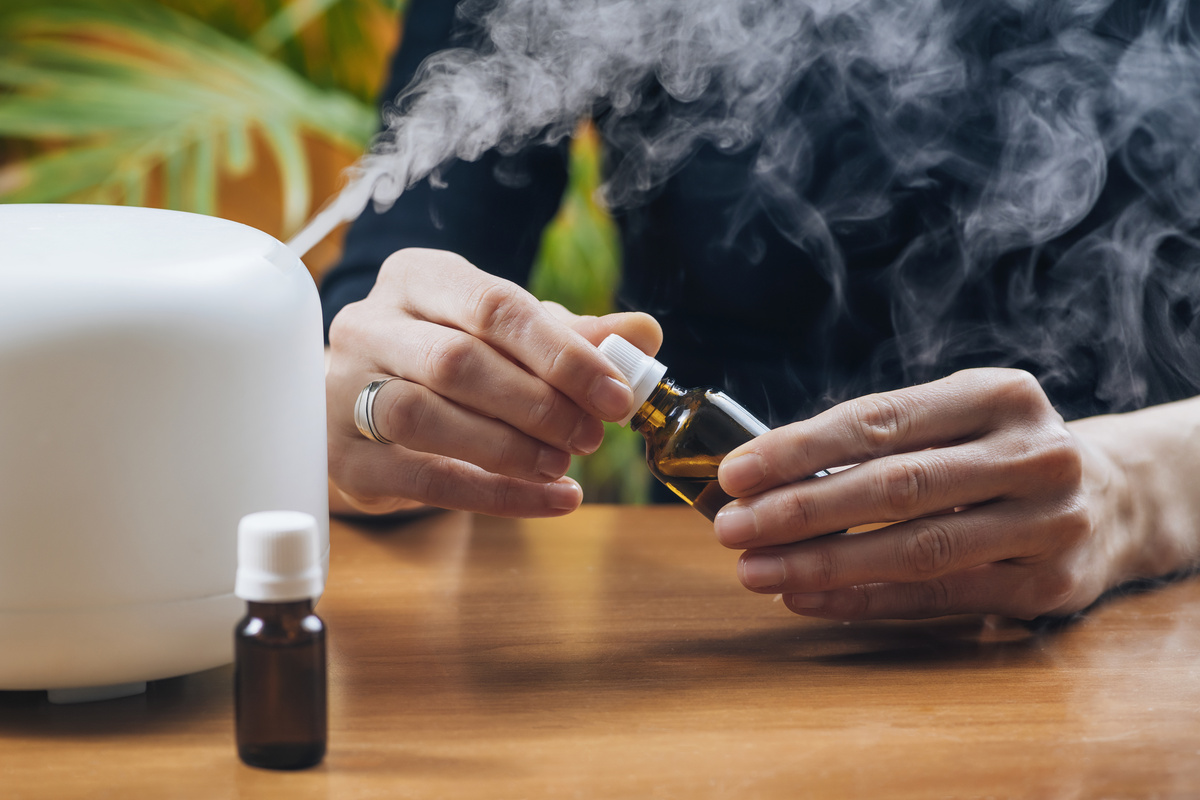
Now that you are interested in Aromatherapy, it is important to know how to choose your essential oils as they can be easily tampered with. Read on to understand how to find quality essential oils that will ensure the success of your therapeutic use.
How to choose quality essential oils
In order to choose quality essential oils, it is important that you develop your sense of smell. One option is to attend an introductory essential oils course or simply start exploring natural products stores that sell essential oils.
Find out about the origin of the essential oil, because its geotype, that is, the environmental factors of the place from where the essential oil was extracted, also determine the chemical components present in it.
Label
When buying essential oils, it is important to read the information on the label. Essential oil labels should contain their popular name, scientific name in parentheses and their expiration date. That is the basics.
Companies also use to present additional and important information such as their certifications, the kind of agriculture (if organic, wild or with agrotoxics), the chemotype (the predominant quantity of a determined aromatic compound from that essential oil), as well as its geotype, the place from where it was extracted.
Company
When buying your essential oils, it is important to pay attention to the brand of the company that commercializes them. Look for reputable and consolidated companies in the market and, even though the low price may seem like a good option, be suspicious if some very expensive essential oils such as rose or jasmine absolute are being sold at a bargain price.
Serious essential oil companies make available the chromatography of their essential oils, a kind of package insert containing the concentrations of the aromatic components present in that oil. Many times essential oils are diluted or adulterated, so be aware of any deception.
Avoid fragrance oils
Fragrance oils, also popularly called "essence" should be avoided. It is very common for people just starting out in aromatherapy to confuse essential oils with fragrance oils.
The essences, unlike essential oils, are produced synthetically in laboratories and have no therapeutic functions. On the contrary: their use can cause hormonal disorders and many other problems such as allergies. Therefore, do not buy them.
Give preference to dark glass jars
Essential oil molecules are photosensitive, meaning that they lose their properties when exposed to light. Therefore, never buy essential oils in bright videos as their therapeutic functions are lost.
Always prefer dark glass bottles, preferably amber, blue or green but never white. Likewise, never buy essential oils in plastic containers.
Uses of essential oils used in aromatherapy
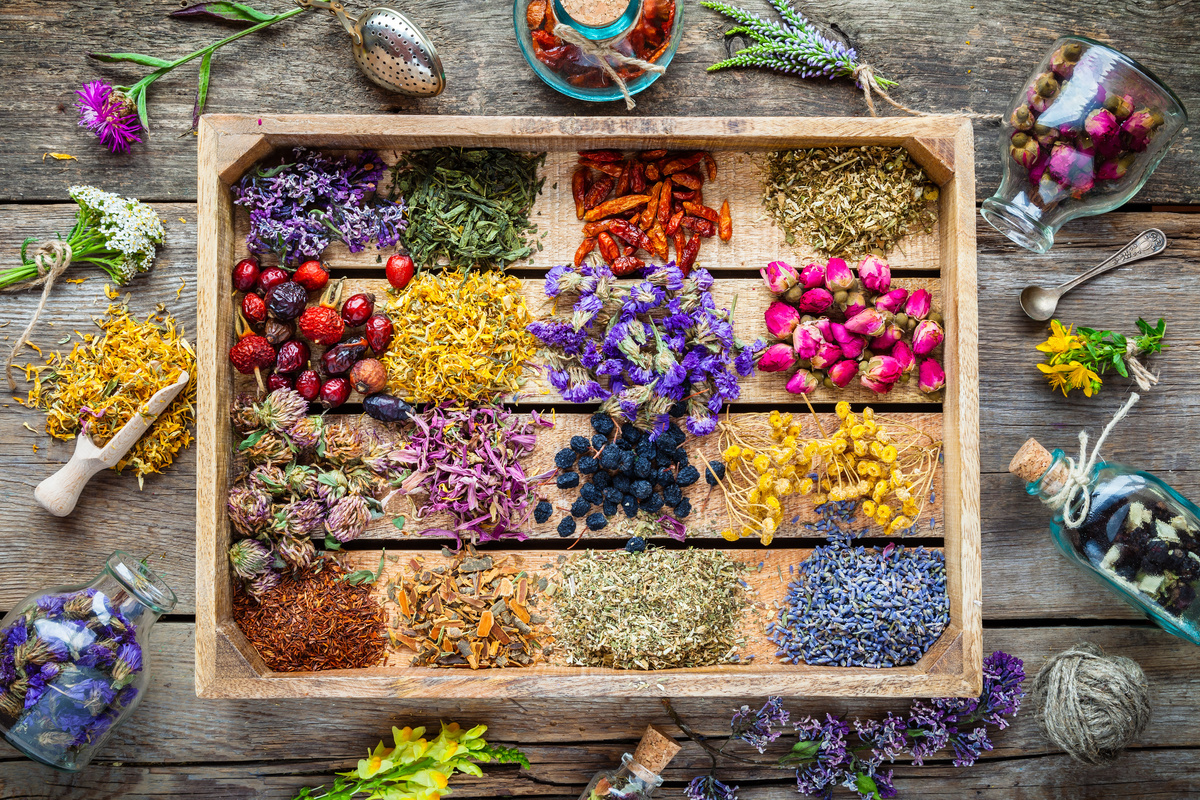
In the following sections you will learn about the therapeutic applications of 20 of the main essential oils used in aromatherapy. To facilitate their identification, their scientific names are included, as well as how they are extracted.
When there are variations in the concentration of their chemical compounds, called chemotypes, they are indicated.Check it out.
Aromatherapy with lavender
French lavender essential oil (Lavandula angustifolia) is used in aromatherapy as an antiseptic for superficial cuts. When inhaled, this essential oil promotes a warm atmosphere that promotes relaxation and sleep.
Lavender is also known due to its anxiety-fighting powers. Moreover, it is effective against headaches. To treat minor burns, you can make a burn balm using 1 tablespoon of aloe juice and 20 drops of lavender essential oil.
Mix them well and store it in the refrigerator in a sterilized glass. Lavender essential oil has different types, so make sure you are using French lavender oil.
Aromatherapy with melaleuca or teatree
Melaleuca, also known as teatree (Melaleuca alternifolia), is a shrub native to Australia. Its essential oil is distilled and its use in aromatherapy is realized due to its antimicrobial, antiseptic and disinfectant properties.
Teatree oil is commonly found in formulations to combat acne, burns and insect bites. It is also excellent for combating inflammation on the scalp. When added to diffusers, it purifies and has a decongestant effect.
It can be added to homemade deodorant formulations as it fights body odor, especially of the armpits. It should never be used internally as it is toxic. It can be irritating to sensitive skin.
Aromatherapy with rosemary
Rosemary essential oil (Rosmarinus officinalis) is native to the Mediterranean region. Extracted by the distillation method, its use in aromatherapy includes the prevention of muscle spasms, improvement of memory, support of the nervous and circulatory system and promotion of hair growth, in addition to having anti-inflammatory power.
It is also considered the students' oil because it facilitates concentration. Rosemary essential oil has many chemotypes, indicating that it has a higher or lower concentration of specific chemical components in its composition. Among them, the most popular are the rosemary chemotype verbenone, cineol and camphor.
The effects of rosemary essential oil also assist in reducing asthma symptoms. It should not be used by people suffering from high blood pressure.
Aromatherapy with lemon
Lemon (Citrus limon) essential oil is extracted by cold-pressing the peels of its fruit. In aromatherapy, it is commonly used to improve mood, helping with symptoms caused by stress and depression.
In addition, this citrus essential oil aids in digestion, reduction of fatigue symptoms, fluid retention, and has excellent results in decongesting the skin.
As with all cold-pressed citrus oil, sun exposure should be avoided after topical use of lemon essential oil as it can cause burns or skin blemishes. Its furanocoumarin-free (LFC) version is more suitable for those who need to be exposed to the sun after using it.
Aromatherapy with ylang ylang
The essential oil of ylang ylang (Cananga odorata) is extracted through the distillation of ylang ylang flowers. Originally from Asia, its use in aromatherapy aids in relaxation, inducing sleep and reducing the symptoms of anxiety.
This floral oil is also used to create an atmosphere of sensuality, increasing libido. When added to hair treatments, ylang ylang essential oil improves hair health. Its cosmetic use is well recognized for improving the appearance of the skin, fighting acne and it is one of the ingredients of the famous perfume Chanel No. 5.
Aromatherapy with mint
Peppermint (Mentha piperita) essential oil is extracted by distilling the leaves of the mint. Its use in aromatherapy is due to its analgesic properties that help combat headaches.
In addition, this powerful refreshing oil aids digestion, fights bad odors, decongests the nose and airways, and is excellent for fighting colds. In home use, peppermint essential oil is a natural pesticide, keeping ants and mice away from your home.
When used in carrier oils, peppermint essential oil relieves muscle aches and pains, and is excellent for relieving nausea, indigestion and stomach cramps when massaged onto the stomach. Can be used to combat bad foot odor.
Aromatherapy with geranium
Geranium (Pelargonium graveolens) essential oil is extracted from the flowers of this plant originally from Africa. It is used in aromatherapy to treat body aches and superficial cuts on the skin. This powerful essential oil is also effective in combating depression and anxiety, as its floral scent brings comfort and raises vibrations.
It is also used as an ally to women's health, as well as in cosmetic treatments, as it improves skin health and is commonly found in anti-aging cosmetic formulas.
Because it has similar therapeutic and aromatic properties, geranium essential oil is a more affordable alternative to rose essential oil, one of the most noble and expensive essential oils available.
Aromatherapy with lemon grass
Lemongrass (Cymbopogon flexuosus) essential oil is extracted by distilling the leaves of an Asian aromatic plant.
Its therapeutic use in aromatherapy is known due to its antimicrobial power, which is excellent to fight infections caused by bacteria and viruses. Due to this property, it also has deodorant effect.
Used topically in carrier oils, lemongrass essential oil is widely used as a muscle relaxant because it has anti-inflammatory properties. Its herbaceous scent with fresh citrus notes also combats anxiety and depression, improving mood and reducing stress.
Aromatherapy with eucalyptus
The essential oil of eucalyptus (Eucalyptus globulus) originates from Australia and is extracted from the leaves of this tree. In aromatherapy, the properties of this oil include its expectorant function, which is present even in traditional medicines that help to improve breathing, reduce mucus and nasal congestion.
It is ideal for combating respiratory infections and problems such as asthma, bronchitis and is therefore commonly used in cold periods to treat flu symptoms, usually combined in a synergy with peppermint essential oil. Eucalyptus essential oil is also used to increase concentration and focus.
Aromatherapy with copaiba
The essential oil of copaiba (Copaifera officinalis) is extracted through the distillation of the oil-resin of a Brazilian tree. Its use in aromatherapy is due to its anti-inflammatory, analgesic and antibacterial properties.
This essential oil also used in the cosmetics industry due to its positive effects in combating acne. In addition, copaiba essential oil can be used to treat small wounds on the skin in massages to promote pain relief.
Aromatherapy with patchouli
Patchouli essential oil (Pogostemon Cablin) is extracted by the distillation method from the leaves of the patchouli, an Asian plant with woody and peppery notes. Its use in aromatherapy is employed to combat insects and relieve stress, especially when combined with peppermint essential oil.
A massage made with patchouli oil has calming and relaxing effect can be done using a tablespoon of carrier oil (almond or grape seed, for example) and 3 drops of patchouli essential oil. Patchouli essential oil is also excellent to fight acne.
Aromatherapy with bergamot
Bergamot (Citrus bergamia) essential oil is extracted by cold pressing of the peel of this European fruit. In aromatherapy, bergamot essential oil is used to improve mental health as, in addition to improving mood, it combats anxiety, stress and depression.
This powerful citrus oil is also used to combat insomnia and can be applied diluted in carrier oil to treat acne, balance skin oiliness, reduce scarring, redness and irritation.
After using it, sun exposure should be avoided, as it can cause burns or skin spots. Its furanocoumarin-free (LFC) version is more suitable for those who need to be exposed to the sun after using it.
Aromatherapy with cinnamon
Cinnamon (Cinnamomum zeylanicum) essential oil is extracted from the bark or leaves of the cinnamon tree by means of distillation or CO2 dragging. In aromatherapy, it is used for its appetite stimulating effect and its antibacterial and anti-inflammatory properties.
In addition, this essential oil also aids circulation, relieves pain and reduces infection. This is an essential oil that should be handled with care and preferably under the guidance of a certified aromatherapist as it can be extremely sensitizing and cause skin burns. Use preferably in room diffusers and never ingest.
Aromatherapy with orange
The essential oil of sweet orange (Citrus sinensis) is one of the most popular and accessible. Extracted through cold pressing of the peels of the orange tree fruits, its use in aromatherapy is related to its digestive, decongestant, detoxifying and anxiolytic properties.
The sweet citrus aroma of orange essential oil calms the mind and reduces tension, which is why it is often added to blends to induce sleep. When inhaled, this powerful essential oil also helps strengthen the immune system.
After using it, remember to avoid exposure to the sun as it may cause skin burns or spots. Its furanocoumarin-free (LFC) version is more suitable for those who need to be exposed to the sun after using it.
Aromatherapy with palmarosa
The essential oil of palmarosa (Cymbopogen Martinii) is extracted through the distillation of leaves of a plant of the same name originating in Asia. In Aromatherapy, this essential oil, which does not belong to the rose family but to the lemon grass family, is used because of its repellent effect.
The essential oil of palmarosa is also used in the cosmetic industry, as it nourishes, moisturizes and improves the appearance of the skin. In addition, this oil also has a relaxing effect on the mind, reducing the effects of stress.
Aromatherapy with clove
The essential oil of carnation (Syzygium aromaticum) is extracted through the distillation of the dried flower buds. It is used in aromatherapy to combat inflammation, pain and to facilitate digestion.
It also energizes the mind and reduces muscle pain and inflammation, and is excellent for fighting infection. Clove essential oil is used in natural dental products because it promotes cleaning and reduces toothaches. Inhaling clove essential oil aids in gasping for breath and can reduce asthma symptoms.
Aromatherapy with olibanum
The essential oil of frankincense (Boswwellia carteri) is usually extracted by distillation of the aromatic resin of this African tree. In aromatherapy, this essential oil is used to calm the mind as it has an anxiolytic effect. Frankincense essential oil also has an analgesic effect and is therefore used to relieve pain.
It can also be added to facial serums and creams to improve the appearance of the skin by reducing spots and expression marks. Its expectorant function decongests the airways and reduces mucus accumulation. It can also be used to induce meditative states.
Aromatherapy with myrrh
Myrrh essential oil (Commiphora myrrha) is usually extracted by distilling the aromatic resin of this African tree. This essential oil is used in aromatherapy mainly for its anti-inflammatory properties. It can also be used against coughs and colds and to heal superficial wounds.
When inhaled, the aroma of this essential oil calms the mind and reduces stress. Myrrh essential oil is also used to improve skin health as it has anti-aging effect. You can use 1 drop of myrrh essential oil diluted in a tablespoon of sweet almond carrier oil to massage the abdomen and improve stomach problems.
Aromatherapy with citronella
Citronella (Cymbopogon nardus) essential oil is extracted by distilling the leaves of this Asian aromatic plant. This essential oil is related to lemongrass and serves as an excellent natural insect repellent when diffused into the environment or used diluted with carrier oil.
Aromatherapists also recommend it because of its antifungal power. Moreover, its aroma helps in diets because it suppresses appetite.
Aromatherapy with mint
Peppermint essential oil (Mentha arvensis) is extracted by distillation of the flowering plant and should not be confused with peppermint oil (Mentha piperita). It is used in aromatherapy to activate memory and is an important ally for students.
Its analgesic power makes this oil an excellent ally against headaches, toothache and muscle pain. Being rich in menthol, this oil is refreshing and can be used to relieve the burning sensation of the skin in summer.
Aromatherapy with rosehip
Rosehip (Rosa rubiginosa) is a carrier oil extracted by cold pressing of the seeds of this plant. Carrier oils are fatty oils used as a vehicle in which essential oils are diluted.
It is used to promote skin regeneration, being incorporated in aromatic synergies that aim to promote a younger and healthier skin. It is rich in antioxidants, being an excellent ally against wrinkles, stretch marks and cellulite. When used in hair, it nourishes and gives more shine to the strands. It should be avoided by people with oily skin or acne, because it can worsen the condition.
What to do in case of allergic reaction in aromatherapy?
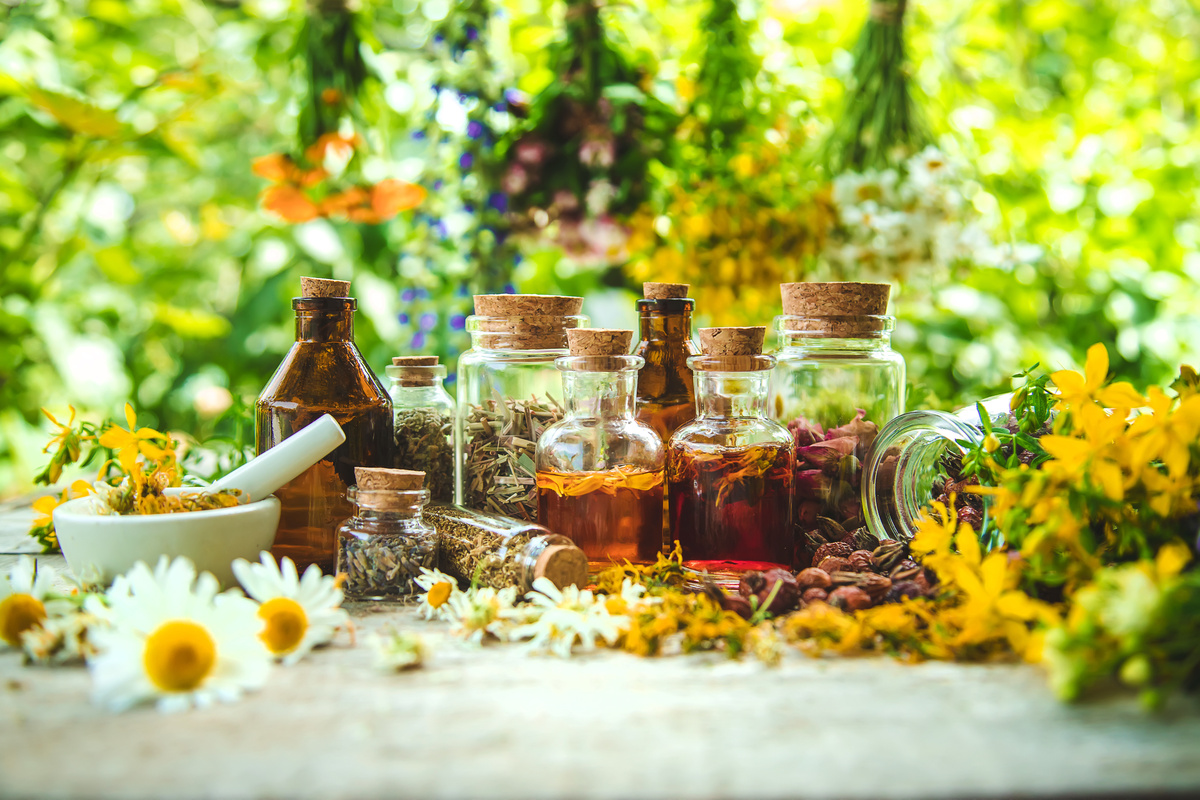
If you experience allergic reactions such as redness, itching or even burning, discontinue use of the essential oil immediately and avoid exposure to ultraviolet rays as they can aggravate the situation. Fortunately, most allergic reactions triggered through the use of essential oils can be treated at home.
If you have experienced allergy after contact of the essential oil with your skin, wash your skin with cold water and mild soap and apply a cold compress to relieve the burning sensation. If you accidentally put essential oil in your eyes, wash them with water and seek medical assistance.
If the allergy was caused by the area diffusion of the essential oil, turn off your diffuser and open all airways in your environment. If symptoms persist or if you have difficulty breathing or swallowing, seek medical attention in a hospital emergency room.

